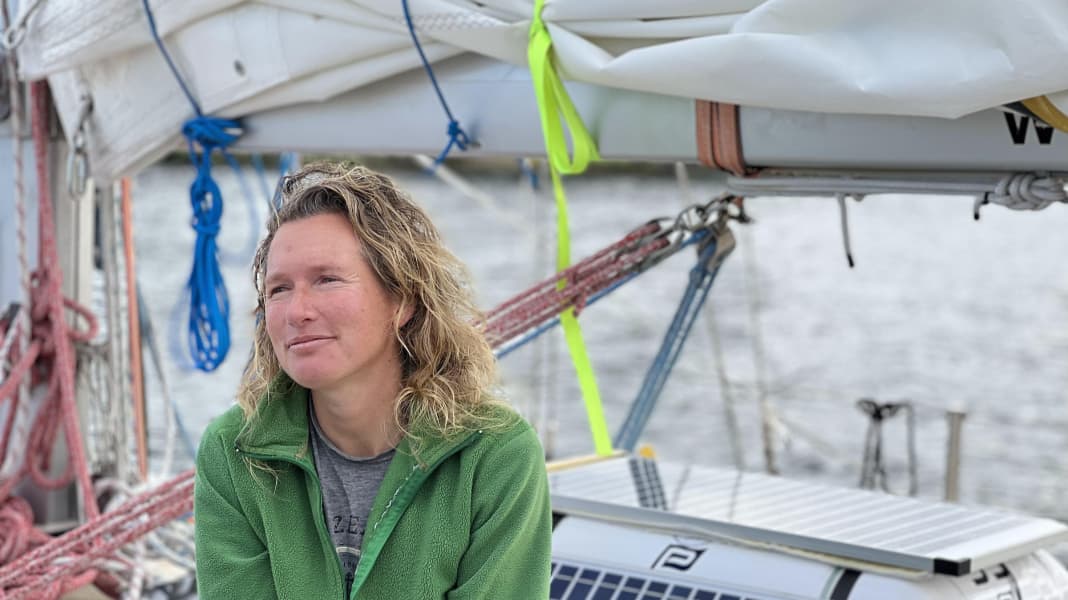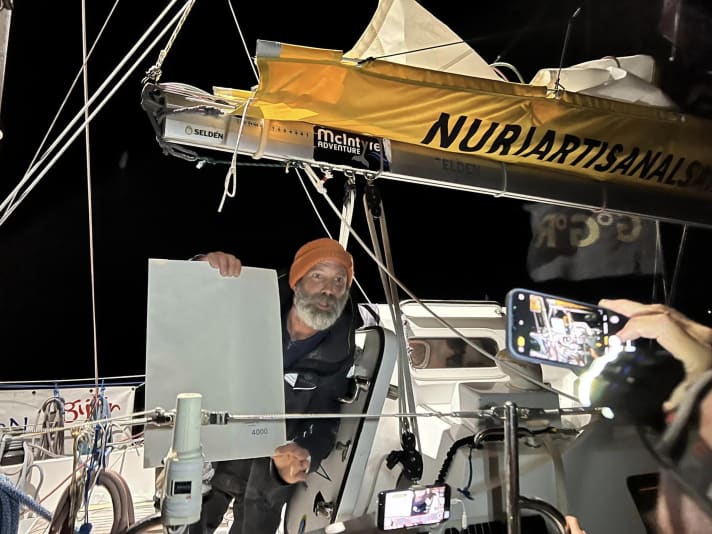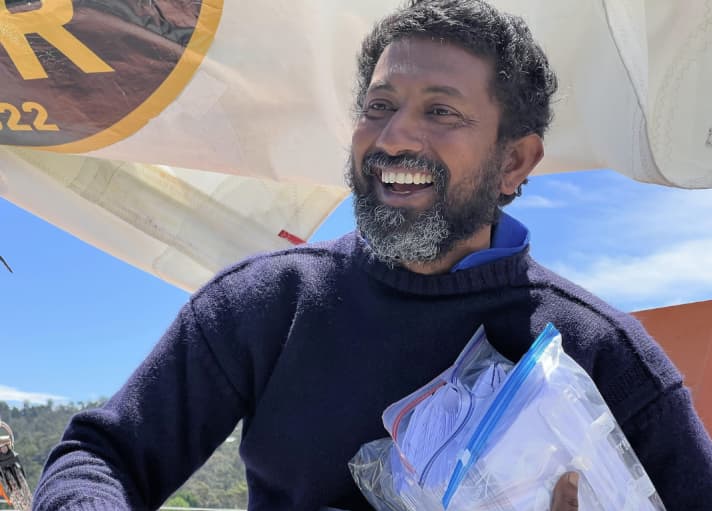
In purely mathematical terms, Neuschäfer even led the field, as she received a time credit of 35 hours for rescuing the injured Finn Taphio Lehtinen. The only woman in the race appeared happy and relaxed when she was interviewed on camera about the stage from Cape Town to Tasmania. The weather was much better than expected, Neuschäfer said. She had been prepared for really rough conditions - for the storm-tested professional sailor, that is far more than the 35 to 40 knots that sent her "Minnehaha" hurtling across the Indian Ocean.
She is incredibly happy with her boat anyway. "Sometimes it sets the course, then I let it do it. I love my boat," said the South African, who has a German father.

Organiser Don McInytre, who personally welcomes almost all participants at the media stops, had all those arriving in Hobart show him their sextant and tell him the story behind it. While Kirsten Neuschäfer reported on how much she enjoys the challenge of traditional navigation, both Michael Guggenberger and Abhilash Tomy told of mistakes that could have ended fatally.
Before reaching Lanzarote, Guggenberger approached the coast far too closely - unknowingly, as he had assumed there was a beacon in a different position. He realised his mistake just in time. Both single-handed sailors were noticeably sleep-deprived during the 20-minute mandatory stop. Both therefore stated that they wanted to take the opportunity to catch up on a few hours' sleep at anchor in Storm Bay.
Simon Curwen, Kirsten Neuschäfer and Abhilash Tomy are now travelling again. The South Pacific gave them a sometimes stormy welcome. On the way to the last major cape of the round-the-world voyage, Cape Horn, there is also a virtual line to protect them, which the sailors have to pass to the north: They must leave 47 degrees south to starboard until they have reached 115 degrees west longitude.

The leading trio is making it exciting: although Simon Curwen is still leading at sea, he is now sailing in the same weather system as his pursuers Kirsten Neuschäfer and Abhilash Tomy. With around 170 and 220 nautical miles behind him, they have moved within striking distance given the dimensions of this race - and both end up with a time credit for their help in the " Asteria " -Sea emergency.
Michael Guggenberger has not yet left Storm Bay. Jeremy Bagshaw is expected here next in a good eight days. Ian Herbert Jones, currently in sixth place, could enter the expansive bay in the south of Tasmania in mid-January.
It has now become very unlikely that Guy Waites will make it in time before the window to pass the waypoint closes on 31 January. Apparently the Brit, who is the only one sailing in the Chichester class after his harbour stop in Cape Town, wants to continue the circumnavigation on his own.
Golden Globe Race: more on the topic
GGR 2022: What has happened so far
- Golden Globe Update 11: Simon Curwen reaches Hobart first
- Golden Globe Update 10: Bowsprit breakage and vegetation slow down sailors
- Golden Globe Update 9: Why it sank " Asteria " ?
- Golden Globe Update 8: Neuschäfer rescues Lehtinen from distress at sea
- Golden Globe Update 7: Emotional moments off Cape Town
- Golden Globe Update 6: Cape Town in the wake, Neuschäfer in second place
- Golden Globe Update 5: New breach on board the "PRB"
- Golden Globe Update 4: Three new videos from the high seas
- Golden Globe Update 3: Sailors reach first media stop
- Golden Globe Update 2: Shipwreck at Guy de Boer in the Canary Islands
- Golden Globe Update 1: Break, comeback and the first task

